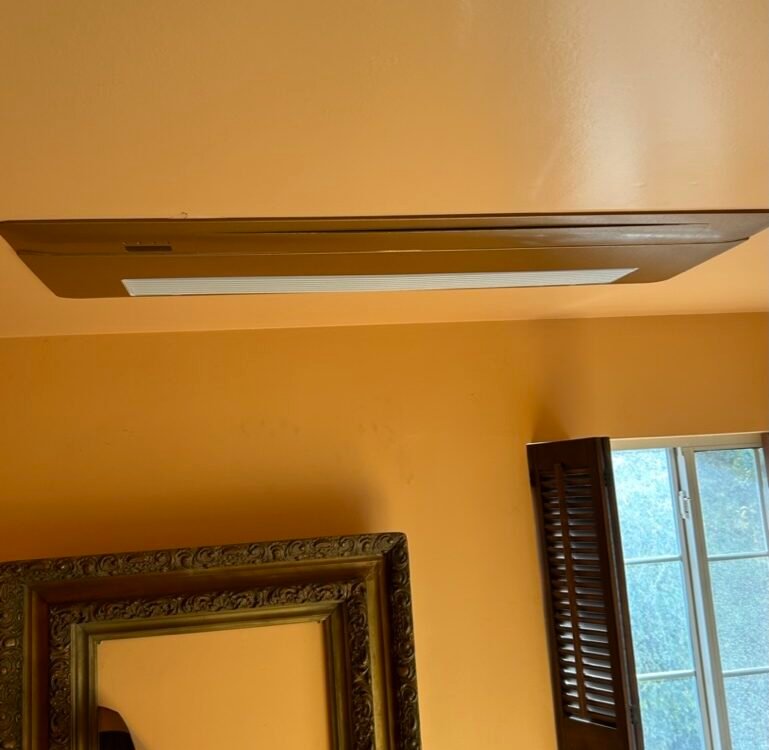The Ultimate Guide to Ceiling Cassettes: Efficient and Stylish Climate Control
When it comes to modern climate control solutions, ceiling cassettes are gaining popularity for their efficiency and sleek design. Whether you’re looking to cool or heat a space, ceiling cassettes offer a versatile and unobtrusive option. In this blog, we’ll explore what ceiling cassettes are, their benefits, the different types available, and why they might be the perfect addition to your home or office.
What Are Ceiling Cassettes?
Ceiling cassettes are a type of air conditioning unit that is installed in the ceiling. Unlike traditional wall-mounted units, ceiling cassettes are designed to be discreet, blending seamlessly into the ceiling. They distribute air evenly throughout the room, providing consistent temperature control.
Benefits of Ceiling Cassettes
-
Efficient Air Distribution: Ceiling cassettes are designed to distribute air in multiple directions, ensuring even cooling or heating throughout the space. This makes them ideal for larger rooms or open-plan areas.
-
Space-Saving Design: Since they are installed in the ceiling, ceiling cassettes free up wall and floor space. This is particularly beneficial in smaller rooms or areas where wall space is limited.
-
Quiet Operation: Many ceiling cassettes are designed to operate quietly, making them suitable for bedrooms, offices, and other areas where noise levels need to be kept to a minimum.
-
Aesthetic Appeal: With their sleek and unobtrusive design, ceiling cassettes can blend seamlessly into any decor. They are a great choice for those who want an efficient air conditioning solution without compromising on aesthetics.
-
Energy Efficiency: Modern ceiling cassettes are built with energy efficiency in mind. They often come with features such as programmable timers and energy-saving modes, helping to reduce energy consumption and lower utility bills.

One-way ceiling cassette, wrapped to match room aesthetic.
Qualifications for Installation
Before installing a ceiling cassette, it’s important to consider the following qualifications related to roof space, attic space, and ceiling shape:
-
Sufficient Roof Space: Ceiling cassettes require adequate space above the ceiling for installation. This includes enough room for the unit itself, as well as space for ductwork and electrical connections. The height of the roof space should be sufficient to accommodate the unit without compromising structural integrity.
-
Attic Access: If the installation involves accessing the attic, ensure there is a proper access point. According to building codes, attic access openings should be at least 22 inches by 30 inches and provide a minimum unobstructed headroom clearance of 30 inches
-
Ceiling Shape: The ceiling should be flat and horizontal to ensure proper installation and operation of the ceiling cassette. A flat ceiling provides a stable surface for mounting the unit and ensures even air distribution. Additionally, the ceiling structure must be able to support the weight of the unit.
-
Structural Integrity: The ceiling and roof structure must be able to support the weight of the ceiling cassette unit. It’s important to have a professional assess the structural integrity of the installation area to ensure it can handle the additional load.
-
Ventilation and Insulation: Proper ventilation and insulation in the attic space are crucial to prevent overheating and ensure efficient operation of the ceiling cassette. Adequate insulation helps maintain the desired temperature and reduces energy consumption.
-
Compliance with Building Codes: Ensure that the installation complies with local building codes and regulations. This includes requirements for fire safety, electrical connections, and structural modifications.
Types
Ceiling cassettes come in various configurations to suit different needs and preferences:
-
One-Way Ceiling Cassettes: These units direct air in a single direction, making them suitable for smaller rooms or spaces where targeted airflow is needed.
-
Four-Way Ceiling Cassettes: These are the most common type and distribute air in four directions, ensuring even coverage throughout the room. They are ideal for larger spaces and open-plan areas.
-
Two-Way and Three-Way Ceiling Cassettes: These units offer a compromise between one-way and four-way cassettes, providing more flexible airflow options for medium-sized rooms.
-
EZ-Fit Ceiling Cassettes: Designed for easier installation, these cassettes fit between standard ceiling joists, making them a convenient option for retrofitting existing spaces
Installation and Maintenance
Installing a ceiling cassette requires professional expertise, as it involves cutting into the ceiling and connecting the unit to the building’s HVAC system. It’s important to hire a qualified technician to ensure proper installation and avoid any potential issues.
Maintenance of ceiling cassettes is relatively straightforward. Regular cleaning of the filters and periodic servicing by a professional will keep the unit running efficiently. It’s also a good idea to check for any signs of wear and tear and address them promptly to avoid more significant problems down the line.
Is a Ceiling Cassette Right for You?
Ceiling cassettes are an excellent choice for those looking for an efficient, space-saving, and aesthetically pleasing air conditioning solution. They are particularly well-suited for larger rooms, open-plan areas, and spaces where wall space is at a premium. If you’re considering upgrading your climate control system, a ceiling cassette might be the perfect option.




